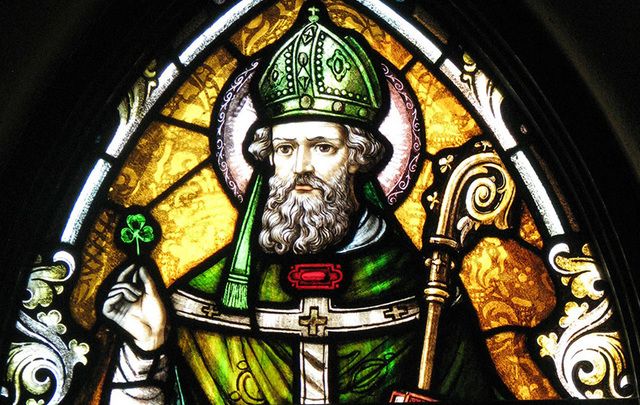
Born in 385 in Roman Britannia in the town now known as Dumbarton, Scotland, Patrick is rightfully considered one of the greatest evangelists in Christian history. Considered a Catholic holiday by many, Protestants need
Patrick begins his autobiography by writing these lines:
My name is Patrick. I am a sinner, a simple country person, and the least of all believers. I am looked down upon by many. My father was Calpornius. He was a deacon; his father was Potitus, a priest, who lived at Bannavem Taburniae. His home was near there, and that is where I was taken prisoner. I was about sixteen at the time.
Patrick’s father was a bishop (pastor) in the ancient ‘British’ Church (he was a Roman who came to Britain to govern the colony, and made his way to Scotland), long before the Roman Catholic church reconquered the West for paganism. He was taken captive by Irish pirates, who took him to Ireland and left him more than 200 miles inland, selling him as a slave. Patrick took upon himself to farm labor, tending sheep. Six years later, Patrick made a break for freedom and traveled back to the coast, where he caught a ride home.
During Patrick’s captivity, his faith grew, as it had to in order to give him the courage and will to survive. As he arrived home, his attention turned from mere survival to compassion for his former captors. He became a clergyman like his father before him, but longed to return to Ireland with the Gospel. Unlike his native home, Ireland was almost thoroughly pagan, with no Christian influence or had not undergone evangelism whatsoever.
Although certain of the details have been distorted by history and stretched by Romanists who later claimed him as one of their saints, we know that Patrick returned to Ireland with a Bible and with a dagger, in case he ran into trouble. It appears he first went back to his slave-master, and God converted him. Then, Patrick set his eyes upon the wicked king of Ireland, Loegaire.
Marching dramatically near the King’s castle with an army of newly converted Irishmen, Patrick refused to relent despite threats of death. Surrounded with the Gospel and the fearless Scotsman, Loegaire appears to have been legitimately converted by the Holy Spirit. By the time Patrick died in 461, Ireland had become thoroughly Christianized and Druidism was entirely absent.
Myths about Patrick range from fanciful to plausible. Patrick didn’t scare away the snakes of Ireland (they are not native to the Island nation, but
Ireland is now mixed between Roman Catholicism and Protestantism and is a battle that is as much political as it is spiritual. On festive occasions, the Romanists decorate with green. But the Protestants decorate with orange. Protestants in Ireland (and around the world) revere William of Orange, the Protestant King who brought religious toleration to Great Britain. It’s for this reason that Protestants in Ireland have typically been loyalists to Great Britain and the Catholics have been dissenters from their union.
Most of the Irish immigrants to the Americas were disgruntled and disenchanted with the British empire adopting Protestantism, and so they brought with them their Irish tradition and the color green. So then, a green “St. Paddy’s Day” is all most Americans know.
For Protestants, however, we wear the color orange. So grab that orange-colored garment and throw it on this St. Paddy’s Day. When people try to pinch you for not wearing green, explain you’re a Protestant…and you preach the Gospel back at them.
While it is true that Patrick wasn’t a Protestant to the extent that his tradition came from the Protestant Reformation (he lived more than a thousand years before), he was no Roman Catholic. He was what Ian Paisley (a famous and sound Irish preacher) would call a proto-Protestant. Listen to that sermon here.










